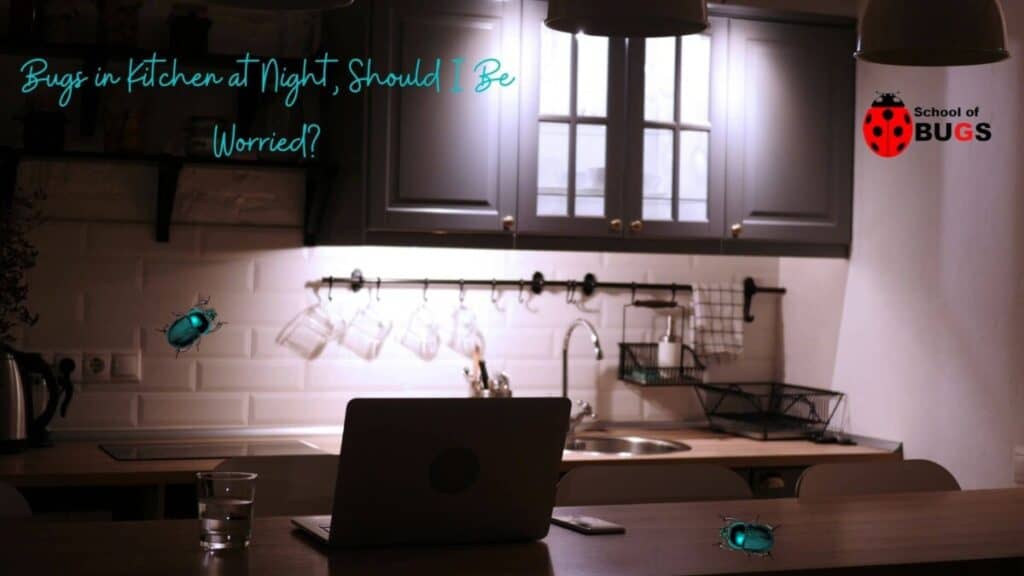
Everyone gets a few bugs in their kitchen occasionally, and it isn’t a huge deal to see one scamper through the dark.
Bugs can still be a big problem though. They carry disease and reproduce quickly, so it is important to make sure you don’t have more hiding in your food and that you know how to clean up if you do.
- What type of bugs are you seeing?
- Why are they in the kitchen?
- Why are you seeing them at night?
- How do I get rid of bugs?
- How do I avoid getting bugs at all?
What types of bugs are they?
There are a few types of bugs that you are most likely seeing. These include ants, cockroaches, flies, moths, weevils, and beetles.
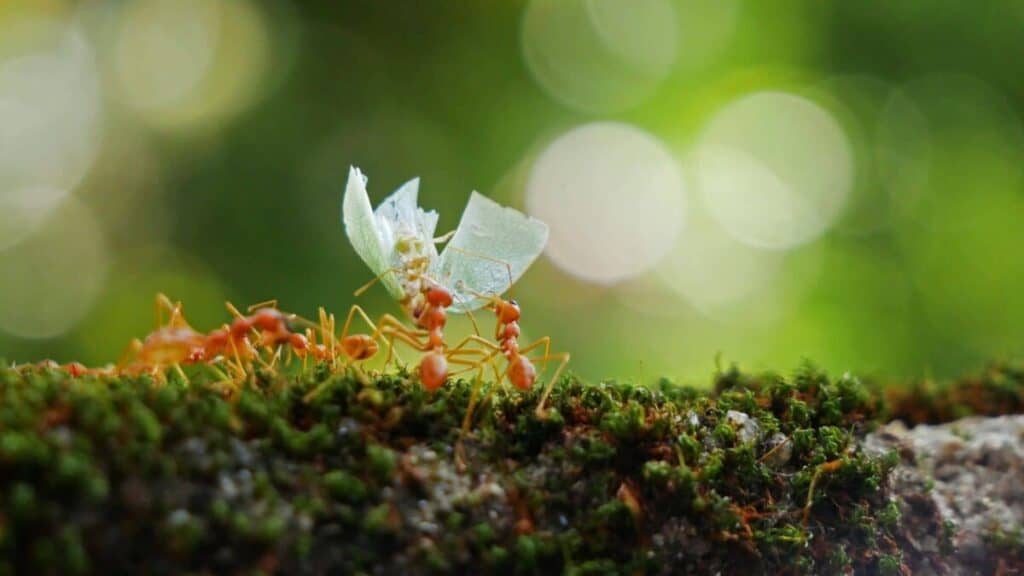
The kind you see depends on where you found them or in what type of food. While seeing one isn’t a great cause for concern, it’s best to check for more and ensure you don’t have an infestation.
Pantry Pests
Moths, weevils and beetles are what are called pantry pests. They are usually found in… you guessed it, the pantry, along with cupboards or any other food storage areas.
They especially love to eat grains, chocolate, spices, and sugary snacks. If you have found an infestation in your box of cereal or bag of flour, they are most likely one of these bugs.
Indian meal moths are the most common of these pantry pests, and their larvae are often found in stored grains.
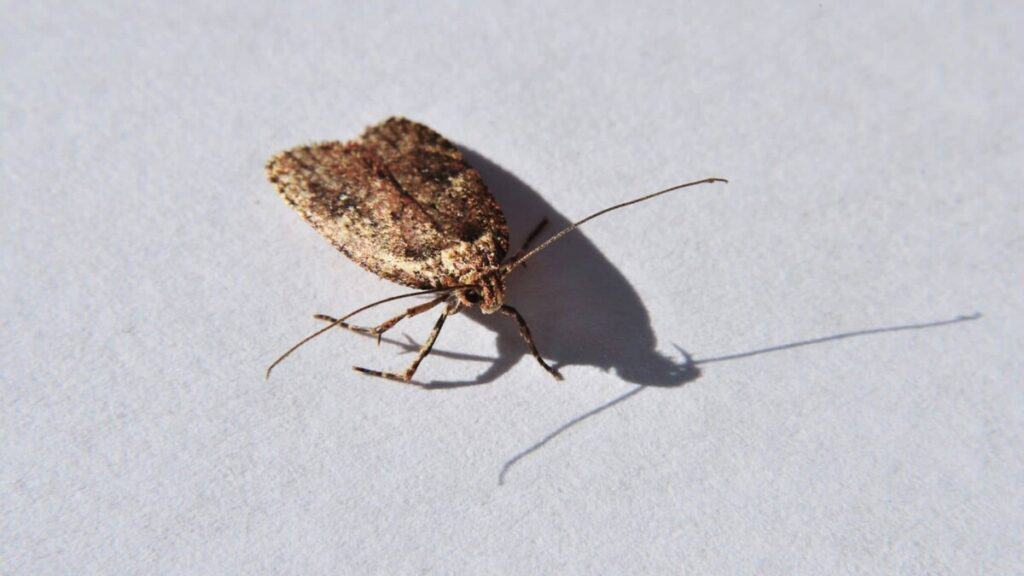
They look like small white worms, and although small at first, they grow to be fairly big. The larvae also spin threads throughout the food and shed their skin several times.
Weevils are small beetles with an elongated snout. They don’t eat processed foods, so they are often found in whole grains, seeds, and beans.
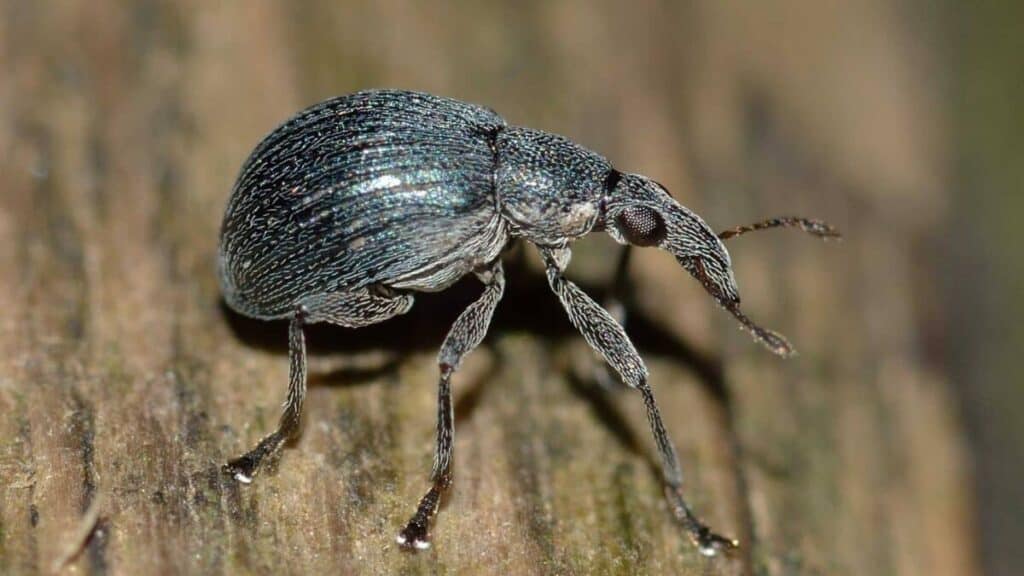
These critters can chew right through paper and plastic, if you see holes in packaging, this is most likely the bug hiding inside.
Flour beetles are small and enjoy flour and cereals. As they eat, the flour can become discolored and develop a foul odor. These can also eat through paper packaging.
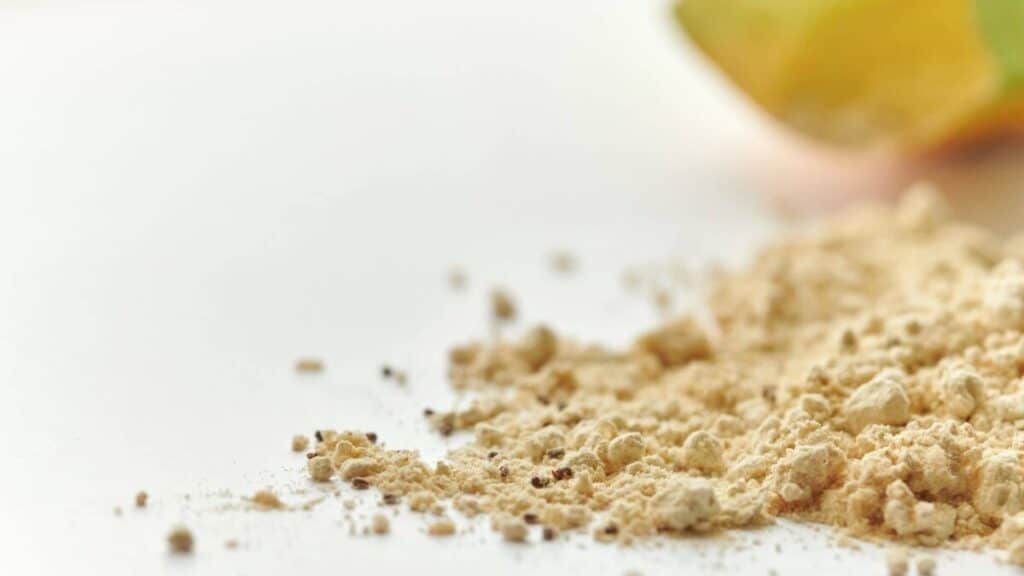
Flies
There are two common types of flies. Fruit flies are one of the most common bugs found in kitchens. They are attracted to the smell of ripe fruits and vegetables and can catch a scent from a considerable distance.
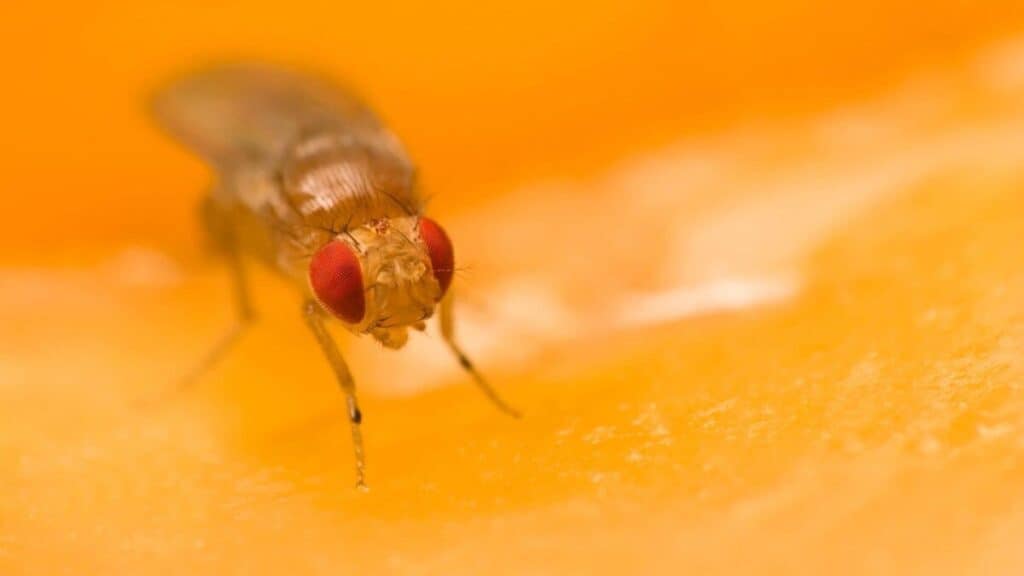
Fruit flies lay their eggs near the surface of produce, so just one fly can quickly turn into hundreds, whether a long fly got through the door or the eggs were laid before you even bought the groceries. Even fresh produce from your garden isn’t safe from these flies.
The other common fly is drain flies. They are larger and can often be mistaken for moths. They are mostly found in drains, sinks, unused pipes, and house plants.
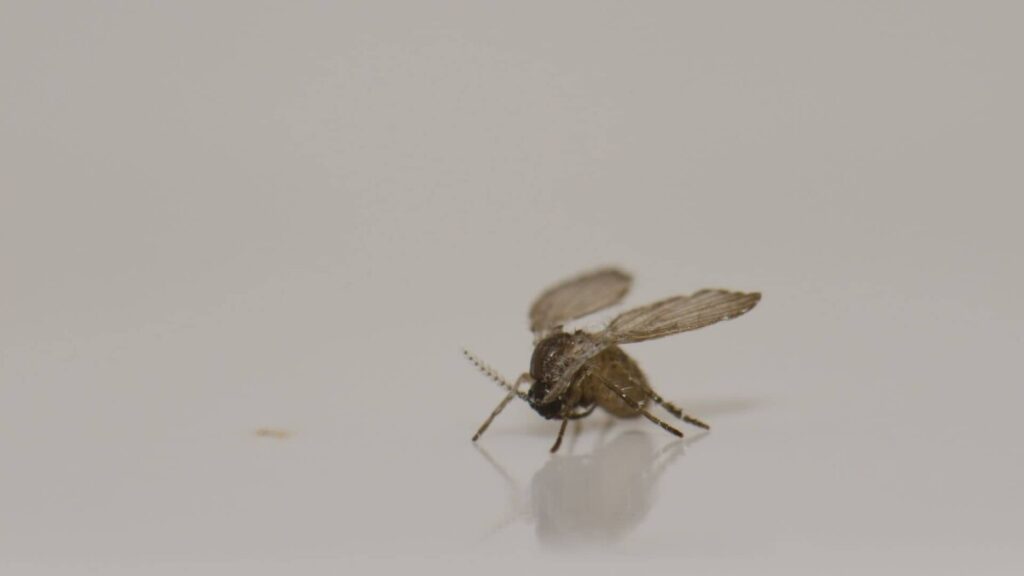
These insects are attracted to your kitchen mainly because of the food. Your kitchen also tends to remain a cozy temperature from the running appliances and provides easy, dark hiding places.
Kitchens also provide moisture, giving these pests all they need to survive: food, water, and shelter. Messes can be especially enticing, so don’t leave soda spills or crumbs on the counter.
Leaky faucets can also provide an ample water source.
Gaining Access
Your kitchen could be perfectly clean and yet still have bugs. Some may enter through a tiny crack beneath the door or fly through an open window.
Others ride right in on groceries, whether from flying into a store or even invading an entire warehouse. Avoid damaged cans or boxes when buying food because this allows bugs the greatest access at a store.
Cockroaches are called “accomplished hitchhikers” by Terminix. They ride in on furniture, in boxes, or any other item brought into your house.
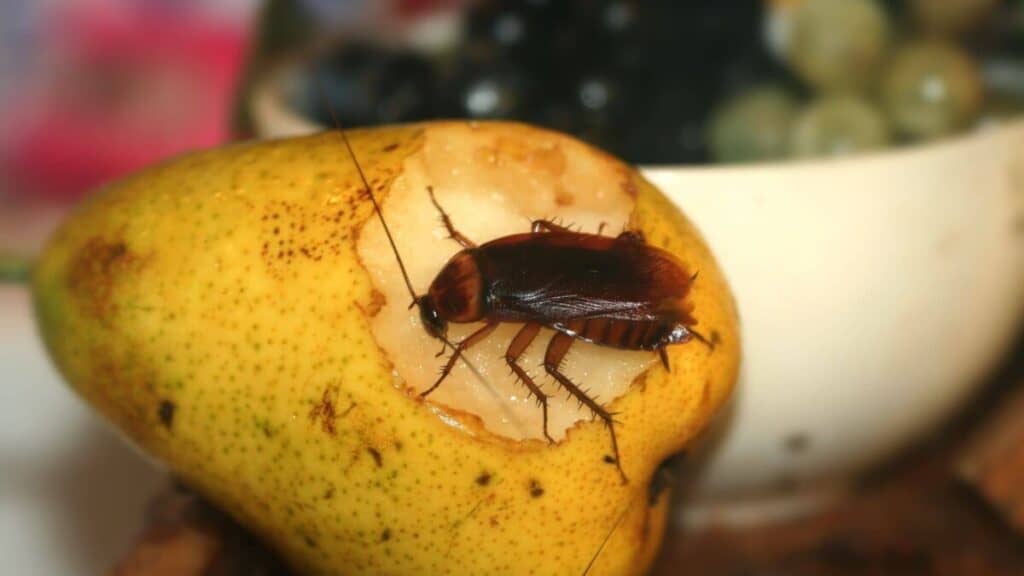
Many cockroaches come right from outside through sewer pipes and tend to head for your cupboards because they like wood surfaces.
Why do I see them at night?
A lot of bugs, especially cockroaches, are nocturnal, so they only come out at night. If you’re seeing them at this time, it means they could have been hiding in your kitchen for a while.
If you’re only seeing these bugs at night on the ground, then you most likely don’t have an infestation in your food yet, but it is still a good thing to check.
Get rid of the bug you found immediately. Then in the morning, go through your food storage areas, especially ones near where you saw the bug, and make sure there aren’t any other pests hiding there.
Should I be worried?

Although largely just annoying to find, bugs are never a good thing to have in your kitchen. They carry disease and cross-contaminate.
They are also very quick to reproduce, so it is important to get rid of them when there are still only a few. Females lay several eggs at a time and these eggs can hatch in less than a week.
You don’t need to be too concerned if you saw a single bug skitter across the floor when you were reaching for a late night snack.
Everyone gets a few bugs every so often when the weather is cold and insects are seeking warmth and food.
However, if you find a large group of insects in your food, throw it away and inspect the rest of your food for others.
If you found one in food that you had recently eaten and are worried that you had accidentally eaten a bug with your cereal, there is no need for great concern.
Bugs aren’t poisonous and eating a couple won’t hurt you.
How can I avoid having bugs in my kitchen?
Keep Your Kitchen Clean

The best way to keep bugs out of your kitchen is cleaning. Wipe up spills, throw away scraps in a closed trash bin, and vacuum up crumbs.
What is just a small crumb to you can be a feast for a small insect. Keep any food or leftovers in sealed containers.
You don’t want ants invading last night’s lasagna. You should also avoid excessive moisture by fixing leaks. Don’t let dishes pile up either. These leave food scraps and pools of water perfect for bugs.
Make sure to get rid of any food waste immediately instead of leaving it to sit. Rotten foods and overripe fruits heavily attract flies and ants with their sickly sweet smell.
Don’t buy too much in bulk either. Leaving grains like rice or flour in your pantry for long periods of time increases the likelihood of pests.
Buy what you need and can use it within a few months, then buy more once you run out. You should also wash all of your produce well.
Anything that hitched a ride on your groceries will go straight down the drain.
Deterrents

You can also ensure that bugs can’t enter your kitchen in the first place. Make sure any crevices are sealed and use screens if leaving your windows open for long periods of time.
Make sure all of your food containers are sealed and airtight. Use your own plastic or metal containers because some bugs can eat right through paper packaging or plastic bags.
If the bugs can’t get to the food in the first place, then they are unable to lay eggs and produce a much greater problem.
Another important deterrent is bug spray or pesticide. You can buy some yourself or have someone else come do it for you.
However, this can be unsafe for small children or if sprayed right onto food, so make sure you know how to use bug spray properly.
If you don’t want to use chemicals, you can use some common household items. The strong smell of bay leaves repels beetles and ants.
Ants also dislike talcum powder, salt, and pepper. You can even make your fly traps using vinegar or wine.
How do I get rid of bugs?
If you only saw one bug around the kitchen, it could just be a single case. Check around where you saw it for others and keep your eye out for more in the coming days.
However, if you saw one or more in a food container, you should check the area for more. First, throw out any container that was infested with bugs.
Then check any other containers nearby for more. If needed, you can pour out the container to ensure that you check the entire thing.
If you don’t find anything, then it was likely an isolated incident, but you can always be careful. Freeze the product for four days or bake in an oven at 140 degrees Fahrenheit for about an hour.
However, if you do find more cases of infestation, then empty your entire cupboard or pantry and wash it thoroughly with soap and water.
You can then return your food to the storage area once you have checked it and it is clean.
Alright, that’s it for this article, here are a few hand-selected articles that you might also find interesting reads:
Small Brown Bugs In Kitchen – What Are They?Tiny black bugs in kitchen cupboards – What To Do Next
5 Most Common Tiny Black Bugs in Kitchen Sink – Identified
Recent Posts
Tiny Black Bugs in Bathroom NO WINGS: What They Are and What to Do!
Finding tiny black bugs in your bathroom can be uncomfortable, to say the least. Especially if they are persistent, or they appear in very large numbers, which they often like to do. When it...
Tiny Black Bugs in Plant Soil - What Are They & What To Do About It
A short horror story: You get a new houseplant. You do your best to take care of it. You’ve ensured that it has the right soil, the right amount of sun, it gets enough water. And then one day, you...

